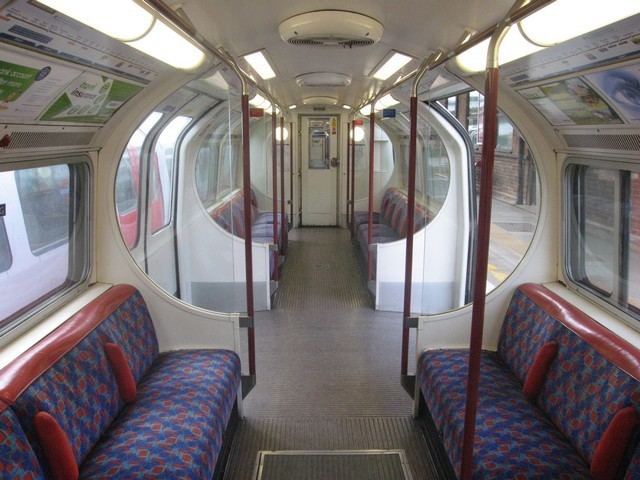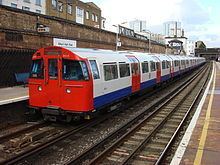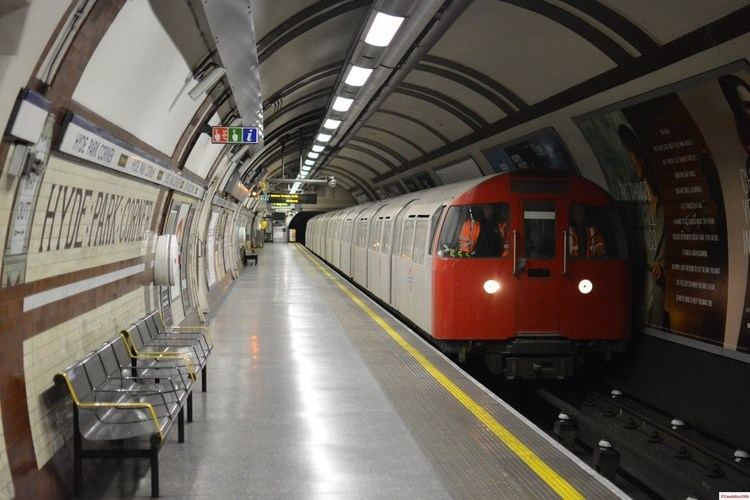In service 1972 – present Constructed 1972 – 1974 | Formation 7 cars per trainset | |
 | ||
The London Underground 1972 Stock is a fleet of trains used on the London Underground. The 1972 Stock was ordered to make up the shortfall in trains on the Northern line's 1959 Tube Stock fleet. It is, however, currently used on the Bakerloo line.
Contents
Following the withdrawal of the C Stock on the Circle, District and Hammersmith & City lines in June 2014, these trains are now the oldest trains on the London Underground and also on any rapid transit system in the United Kingdom.

Construction

A total of 252 cars were ordered from Metro-Cammell and later refurbished by Tickford and Rosyth Dockyard. In 2016, the 1972 stock started to have life extension work done to ensure the trains could remain in service.

In the early 1970s the 1938 Tube stock on the Bakerloo and Northern lines was life-expired and due for replacement. Tentative designs for a new Northern line fleet were abandoned when the go-ahead was given for the Piccadilly line to be extended to Heathrow Airport. That required a totally new fleet of trains to replace the 1959 stock then in use. The plan was made to transfer the 1959 trains to the Northern, to allow the worst of the 1938 stock there to be scrapped, but there were only 76 1959 Tube stock trains, and the Northern line needed more than that to operate. Originally it was planned to refurbish some 30 1938 trains, but this was scrapped in favour of 30 new trains - 1972 Mk1 Tube stock.

The 1972 Tube stock was ordered in a hurry, so there was no time to create a new design; the trains were based on the 1967 Tube stock on the Victoria line. Although almost identical looking, the 1972 trains had a guard and door controls in the rear car, and were not compatible with 1967 Tube stock (though in later years some 1972 cars were adapted to run with the 1967 trains on the Victoria line).

A further 33 trains of 1972 Tube stock were ordered to provide service on the Jubilee line. The 1972 Mk2 stock had slightly different interiors, such as dark blue seating moquette (unlike the red and grey on the earlier 1972/1967 trains). Externally the biggest difference was that the doors were painted red, with an LT roundel on the side of the carriages, rather than the Johnston lettering. The train number plates on the 1972 Mk2 trains operated on the Northern and Bakerloo lines prior to the opening of the Jubilee line in 1979.
With the introduction of the 1983 Tube stock on the Jubilee in 1984, the 1972 Mark 2 trains were transferred to the Northern line, then subsequently to the Bakerloo line, where they remain in service. The earlier (Mark 1) 1972 stock on the Northern line was replaced by 1995 Tube Stock in 1999. The 1972 Mark 2 stock was extensively refurbished in the 1990s. After being withdrawn from the Northern line, a few cars of 1972 Mark 1 stock were converted to run with 1967 stock in service on the Victoria line. A further two trains were converted to be compatible with the MkII type, and these now run on the Bakerloo line. One ex-Northern line Trainset is also permanently based at the now-closed Aldwych tube station, for use in films.
The 1972 trains are formed of seven-car sets, and have a total of 268 passenger seats.
Future replacement
The Deep tube programme (DTP) originally covered the replacement of the trains and signalling on the Bakerloo and Piccadilly lines, and had been expanded to cover rolling stock requirements arising from the planned extension of the Northern line to Battersea, the eventual replacement of Central line trains and proposed increased service frequency on the Northern and Jubilee lines. The EVO tube concept design, a lighter articulated train with walk-through cars, was introduced early in 2011. In early 2014 the Bakerloo, Piccadilly, Central and Waterloo & City line rolling-stock replacement project was renamed New Tube for London (NTfL) and moved to the design and specification stage. The proposal introduces fully automated trains and signalling to increase capacity first on the Piccadilly line in 2025, followed by the Central, Waterloo & City, and Bakerloo lines by 2033. The fully automated trains may not have drivers; however, the ASLEF and RMT trade unions representing drivers strongly oppose this, saying it would be unsafe.
Asset Inspection Train
Middle two car are 67DM vehicles - 3079, 3179. Front 2 and rear two are 72 MK1 stock
Unit 3079 & 3179 have recently been overhauled in Eastleigh. With no cab windows and new cables leading into each other. The AIT (Asset Inspection Train) will replace the Track Recording Train (1960 Stock DMs and 73 Stock T) which is currently in use.
